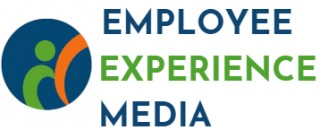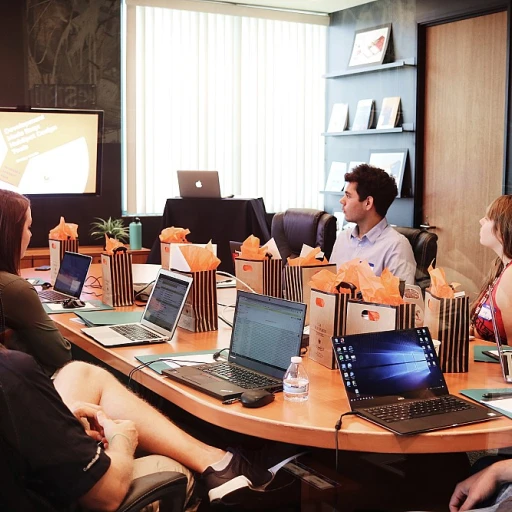
The Role of Staff Meetings in Employee Experience
Facilitating Communication and Alignment
Staff meetings play a critical role in shaping the employee experience by facilitating communication and alignment across teams. In a well-structured setting, meetings provide a platform for team members to share goals, update on progress, and discuss any issues affecting their work. This regular interaction ensures all staff members remain informed and aligned on organizational objectives. Effective staff meetings also encourage feedback and decision making. When employees have the opportunity to share their insights and concerns, it fosters a culture of open communication and engagement. Team meetings that continually invite feedback help build trust among team members, leading to improved employee satisfaction and productivity. At the core, staff meetings should aim to create a cohesive environment where every team member feels heard and valued. This can be greatly enhanced with a clear meeting agenda that outlines action items and time allocations, keeping the meeting focused and meaningful. In successful staff meetings, team members leave knowing their voices have contributed to the team's trajectory, enhancing their overall work experience. For further insights on ensuring equitable practices in meetings and organizational initiatives, explore this understanding the role of a pay equity tool in enhancing employee experience.Common Challenges in Conducting Staff Meetings
Addressing Key Obstacles in Staff Meetings
Conducting staff meetings presents a myriad of challenges that can hinder the overall employee experience if not addressed effectively. Crafting effective meetings involves overcoming common hurdles to ensure they serve their primary purpose of facilitating communication and improving collaboration among team members. One prevalent issue is the lack of a clear meeting agenda. When a meeting starts without a well-defined plan, it tends to go off track, wasting the team's valuable time and resources. An agenda helps set the meeting cadence, keeping discussions focused on goals and decision making. Another challenge is ensuring effective participation. It's not uncommon for meetings to be dominated by a few individuals, leaving others disengaged. Encouraging all team members to share their perspectives can enhance employee engagement and uncover innovative ideas. Timing also plays a significant role. Meetings scheduled at inconvenient times or lasting too long can lead to fatigue and reduced productivity. Striking the right balance by considering the team's schedule and maintaining a reasonable duration is vital for a successful staff gathering. Furthermore, the dynamic of virtual meetings introduces additional complexities. Connectivity issues, lack of non-verbal cues, and potential distractions can impact the effectiveness of virtual staff meetings. Feedback mechanisms are another area where meetings often fall short. Without proper channels for employee feedback, teams might miss opportunities for improvement. Regular check-ins and follow-up on action items are crucial components of successful meetings. For more insights on navigating these challenges, understanding the importance of pre-adverse action in employee experience might offer valuable perspectives. Learn more By addressing these common challenges through best practices, organizations can foster an environment where meetings become a tool for enhancing the employee experience.Strategies for Effective Staff Meetings
Implement Practiced Techniques for a Seamless Meeting Experience
Conducting effective staff meetings requires intentional strategies to ensure all team members are engaged, and communication is clear. Here are some best practices for effective staff meetings:- Establish Clear Meeting Objectives: Specify the goals of the meeting in advance. A well-defined purpose helps focus discussions and keeps the meeting on track.
- Create a Robust Meeting Agenda: Develop a detailed meeting agenda to guide participants on what's expected. Prioritize topics, including time allocations for each.
- Encourage Inclusive Participation: Foster an environment where all staff members feel valued and encouraged to share their thoughts. Use tactics like round-robin discussions to give each person a voice.
- Facilitate Decisive Action Items: Clearly identify action items and assign responsibilities to specific team members to ensure accountability and follow-up.
- Implement Regular Check Ins: Utilize consistent check ins with team members to gather feedback on meeting effectiveness and areas for improvement.
- Incorporate Employee Feedback: Actively seek input from employees post-meeting to refine future processes and adapt to the team's evolving needs.
Impact of Virtual Staff Meetings on Employee Experience
Virtual Meetings: A New Dimension to Employee Experience
The shift to virtual staff meetings has transformed how teams interact, bringing both opportunities and challenges. Virtual meetings offer flexibility, allowing team members to connect from different locations, which can be particularly beneficial for remote teams. This flexibility helps in accommodating diverse work schedules and time zones, making it easier for staff members to participate without the constraints of physical presence.
However, virtual meetings also present unique challenges. Technical issues, such as connectivity problems, can disrupt the flow of a meeting and hinder effective communication. Additionally, the lack of physical presence may lead to reduced engagement, as team members might find it easier to get distracted. To counteract these challenges, setting a clear meeting agenda and ensuring all participants have access to necessary technology is crucial.
Enhancing Engagement in Virtual Settings
To make virtual staff meetings more effective, it is important to incorporate strategies that enhance engagement. Encouraging active participation by asking for employee feedback and promoting open discussions can help keep the meeting dynamic. Utilizing tools that allow for real-time collaboration, such as shared documents or interactive polls, can also make virtual meetings more engaging.
Another best practice is to keep meetings concise and focused. Virtual meetings should have a clear purpose and set goals, with a well-defined meeting agenda to guide the discussion. This helps in maintaining the attention of team members and ensures that the meeting time is used efficiently.
Impact on Employee Experience
When conducted effectively, virtual staff meetings can positively impact employee experience by fostering a sense of inclusion and collaboration. They provide a platform for team members to share ideas and feedback, contributing to a more cohesive work environment. Moreover, the flexibility of virtual meetings can improve work-life balance, as employees can attend meetings from their preferred locations.
In conclusion, while virtual staff meetings come with their own set of challenges, adopting best practices can help in making them a valuable tool for enhancing employee experience. By focusing on engagement and clear communication, organizations can ensure that virtual meetings contribute positively to their teams' dynamics.











